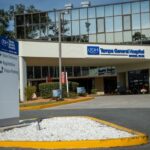
 Part II
Part II
Last month, we shared what Physician leadership groups (PLGs) are and how they play an integral part in chipping away internal organizational silos by fostering mutual trust between a hospital organization and its physicians—all while driving sustained growth and strong operational performance.
This month, we dive into the fundamentals of PLGs and what the future holds.
Fundamentals of PLGS
PLGs essentially have a three-fold purpose:
• To provide ongoing dialogue between local hospital administration and members of the medical staff
• To provide a forum for strategic hospital discussions
• To act as a sounding board for the CEO when he or she has decisions to be made that will impact either patient care or physician work processes
An important differentiator for the PLG is that it is not designed to undertake any functions of the medical staff committee or any other standing medical staff committees. It does not engage in:
• Peer review
• Credentialing
• Disciplinary actions
• Quality assurance/CQI functions
• Addressing bylaws changes, etc.
Most importantly, PLG meetings are purposely scheduled in the evenings with a special meal and typically last about two hours (or as long as members want to meet). PLGs function along the lines of a brainstorming, idea-generating session. It has a lightly structured agenda, fewer time constraints and less patient care constraints, and strategy is the focus.
What is the Composition of PLGS?
PLGs consists of several key stakeholders that make up about a 12-14-member committee:
1. Key formal and informal medical staff leaders:
• Formal leaders such as the president of the medical staff or other representatives on the MEC, medical directors from service lines of the hospital, credentials or quality committee chairs
• Informal leaders such as outspoken leaders on the medical staff with great credibility and clinical leadership
• Miscellaneous, multidisciplinary representatives including from primary care, surgical care, specialty care, representatives from the hospitalist service (if one exists), ER physicians and others
2. Key senior administrators:
• The CEO is mandatory
• The CNO is mandatory
• The CMO (if you have one) is mandatory
• Optional: CFO, business development VP and other senior nursing leaders
3. Corporate representatives (if a member hospital of a larger health system):
• Corporate CMO
• Corporate CEO (based on availability)
• Corporate business development
4. Ad-hoc representative based on the agenda items:
• Medical director of ICU, ER, Radiology, Pathology, Anesthesia, Surgical Services
What Can PLGS Accomplish?
PLGs can address many strategic initiatives to improve efficiency, patient experience and the quality of care provided to patients. PLGs have proven to be invaluable when implemented at facilities around the country by driving improvements in:
• Communication between the hospital ER and community primary care physicians when the latter’s patients have been admitted to the hospital
• Implementation of departmental redesign strategies
• Communication between hospitalists and PCPs
• Implementation of clinical order sets
• Patient registration process
• Discharge planning process
• Facilitation and discussion of action plans to improve physician and patient experience survey results
• Medication reconciliation process
• Physician-nurse councils focused on the delivery of care in special care units
• Care Coordination Initiatives
• Technology/Large Capital Selection
• Clinical Documentation Standards
What Does the Future Hold for PLGS?
In an ideal healthcare landscape, all hospitals would embed PLGs in a culture of leadership. They can serve as the cornerstone for:
• Incubating models of care
• Vetting out solutions to implementation of clinical guidelines
• Ensuring that the community is at the center of care
• Identifying population-based programs that improve the health of the community
PLGs are an important component of a health system’s vision and strategy. As systems set out to achieve their goals by aligning clinical strategy with goals of the triple aim, PLGs uniquely position them to maximize their strategies with ample physician input.
What Other Innovative Leadership Structures Have Emerged from PLGS?
Some healthcare organizations that have realized success with their PLGs have established innovative subsidiaries such as:
• Nurse leadership groups
• Service line leadership groups
These innovative committees have the same goals, allow key stakeholders to share insight with senior management and generate first-hand suggestions on how to improve hospital service offerings.
What Is the “Secret Sauce” for PLGS?
It’s crucial to view PLGs as not just another committee meeting for senior leadership to report out, but instead as a physician-led committee focused on gathering input from physicians. The hospital leadership’s role in the context of these committees is to listen.
The most successful PLGs are those in which the CEO simply listens to his or her medical staff for an entire meeting, takes and reflects on their input, and comes back in a month with proposed solutions to physician concerns.
BDO’s Healthcare Resource Optimization team helps health systems optimize assets, operations and workforce to achieve better financial returns and the best use of resources. We can help organizations design and execute new work plans—including those involving PLGs—to ensure outcomes align with the industry’s better performers.


























